Abstract
1. Abrupt alterations in load (load-clamping) have been imposed on cat papillary muscles during the course of isotonic shortening, between the onset of shortening and peak shortening.
2. For any given total load, whether imposed during the course of shortening or before stimulation, the velocity of shortening is determined solely by the instantaneous length, and not by the sequence of length and tension changes through which it arrived at that length.
3. This unique force—velocity—length relation is independent of time from just after the onset of shortening until just prior to peak shortening.
4. These results suggest that a steady state exists for the maximum intensity of active state in heart muscle over a major portion of the time during which isometric force is rising, and that heart muscle always senses total load while shortening.
Full text
PDF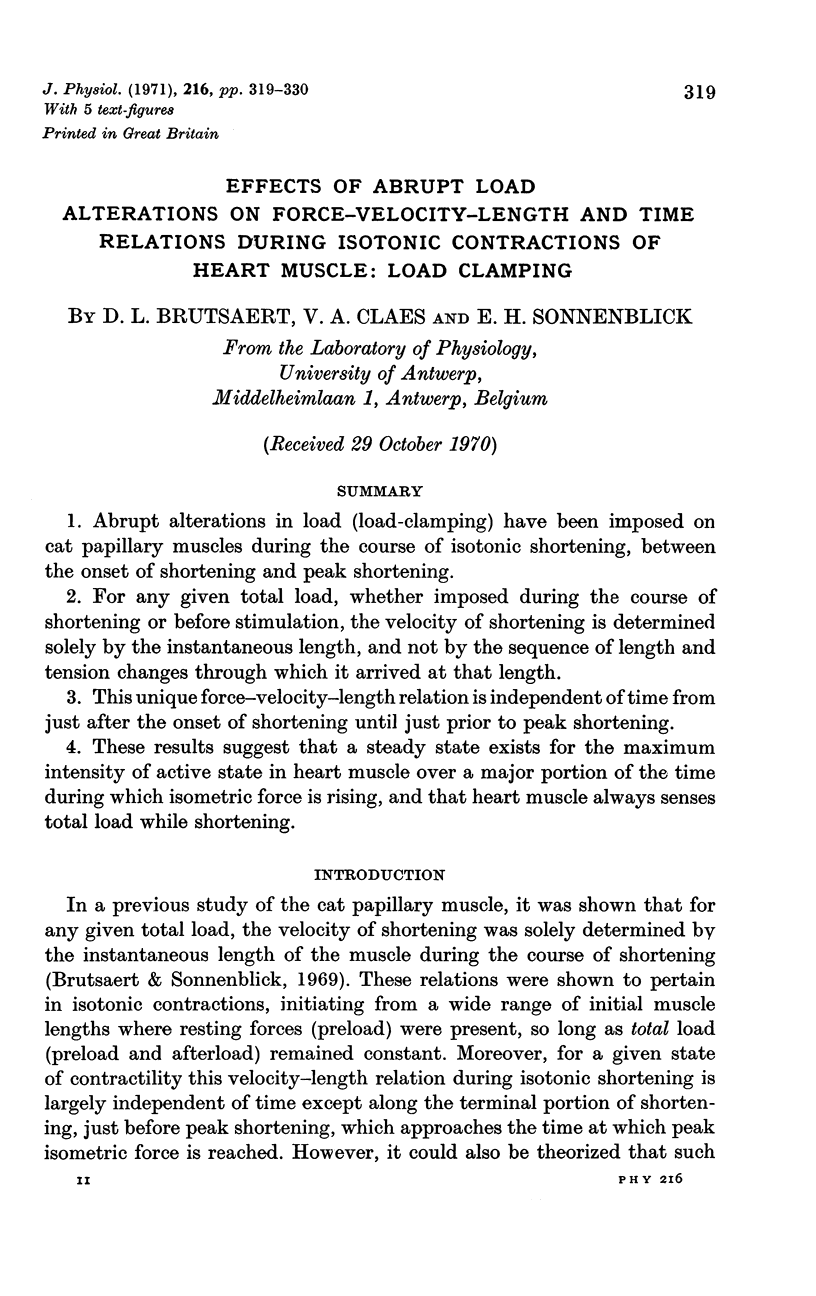
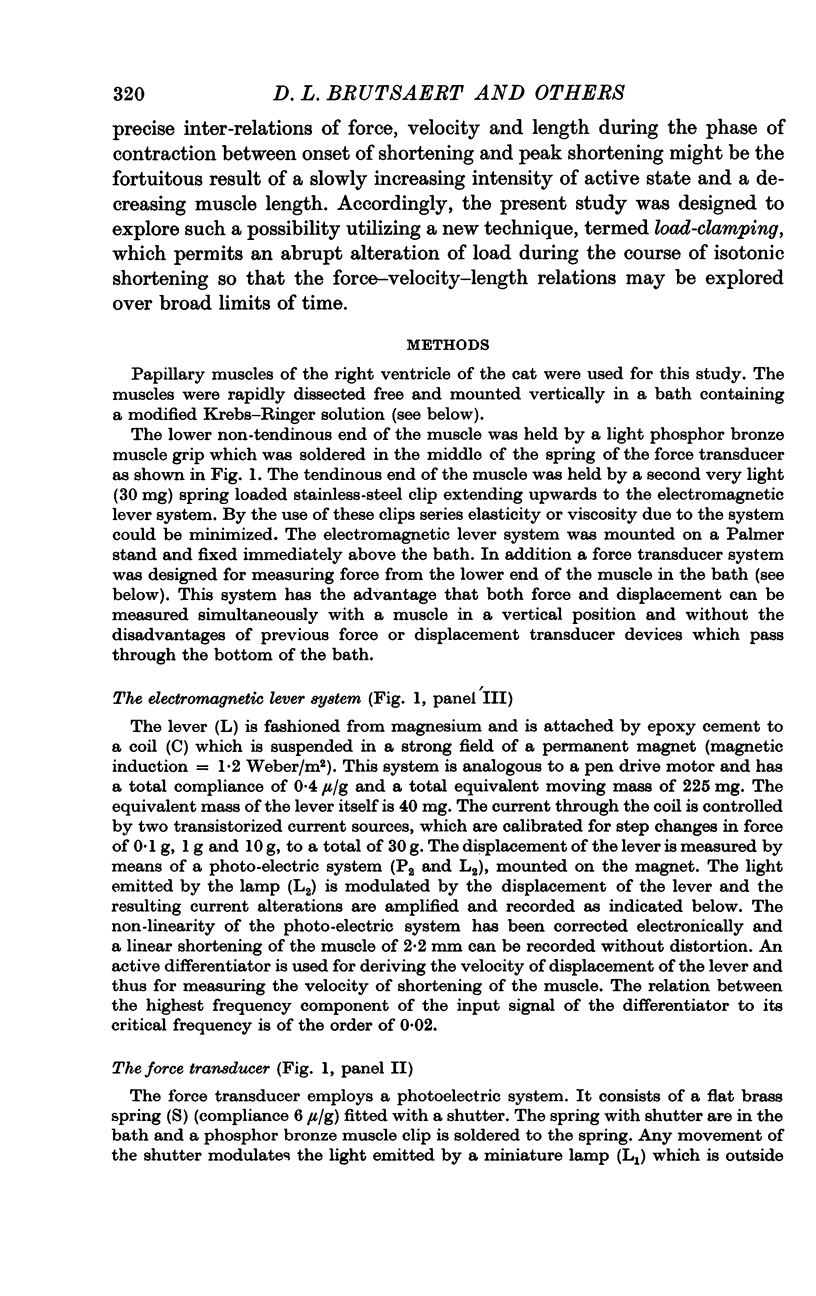
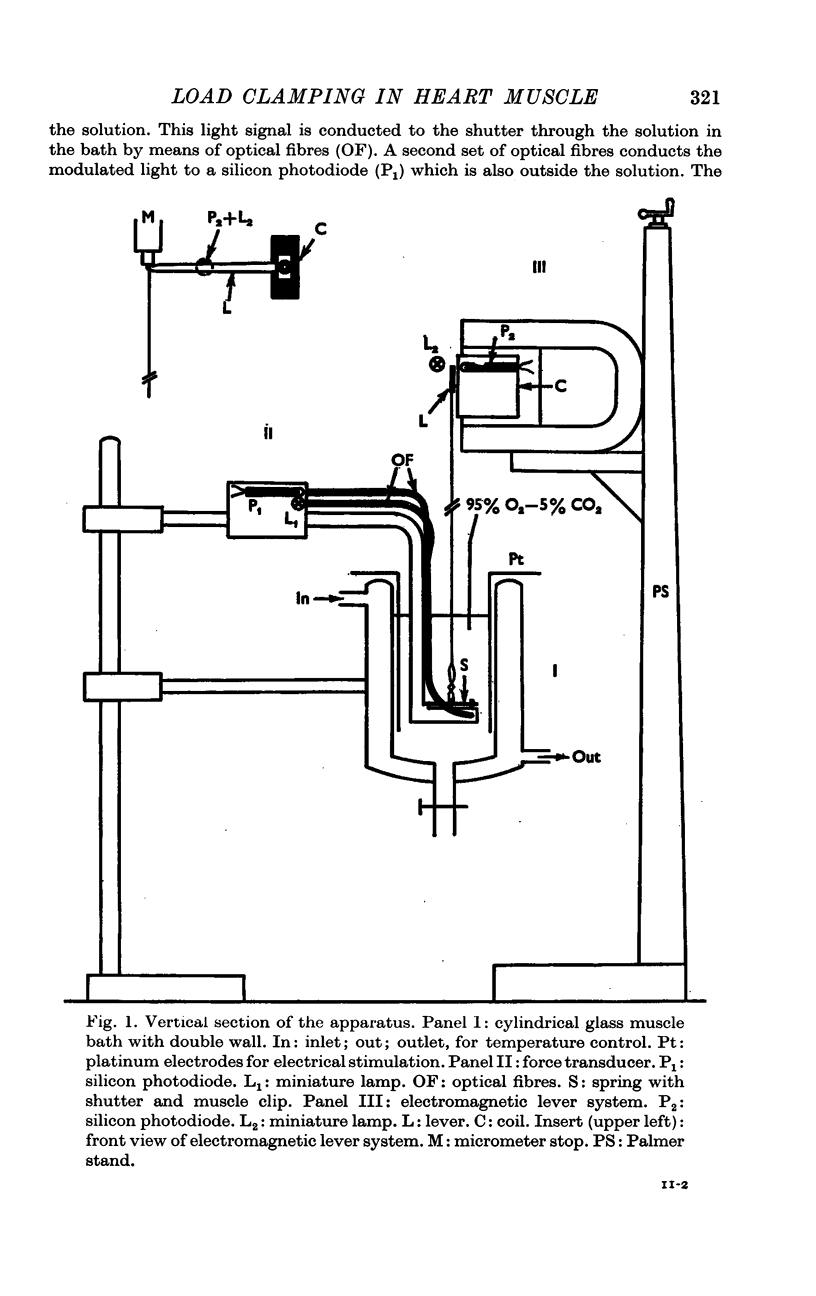
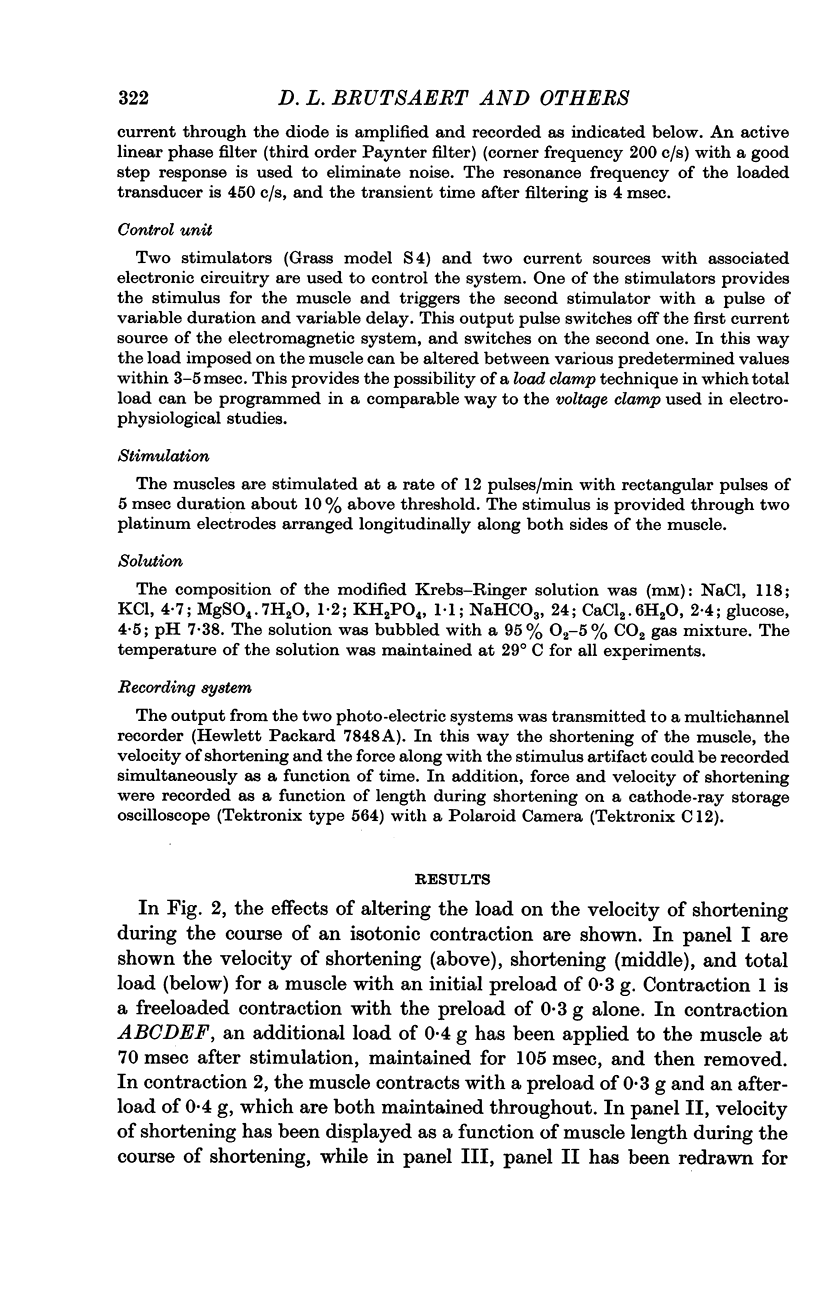


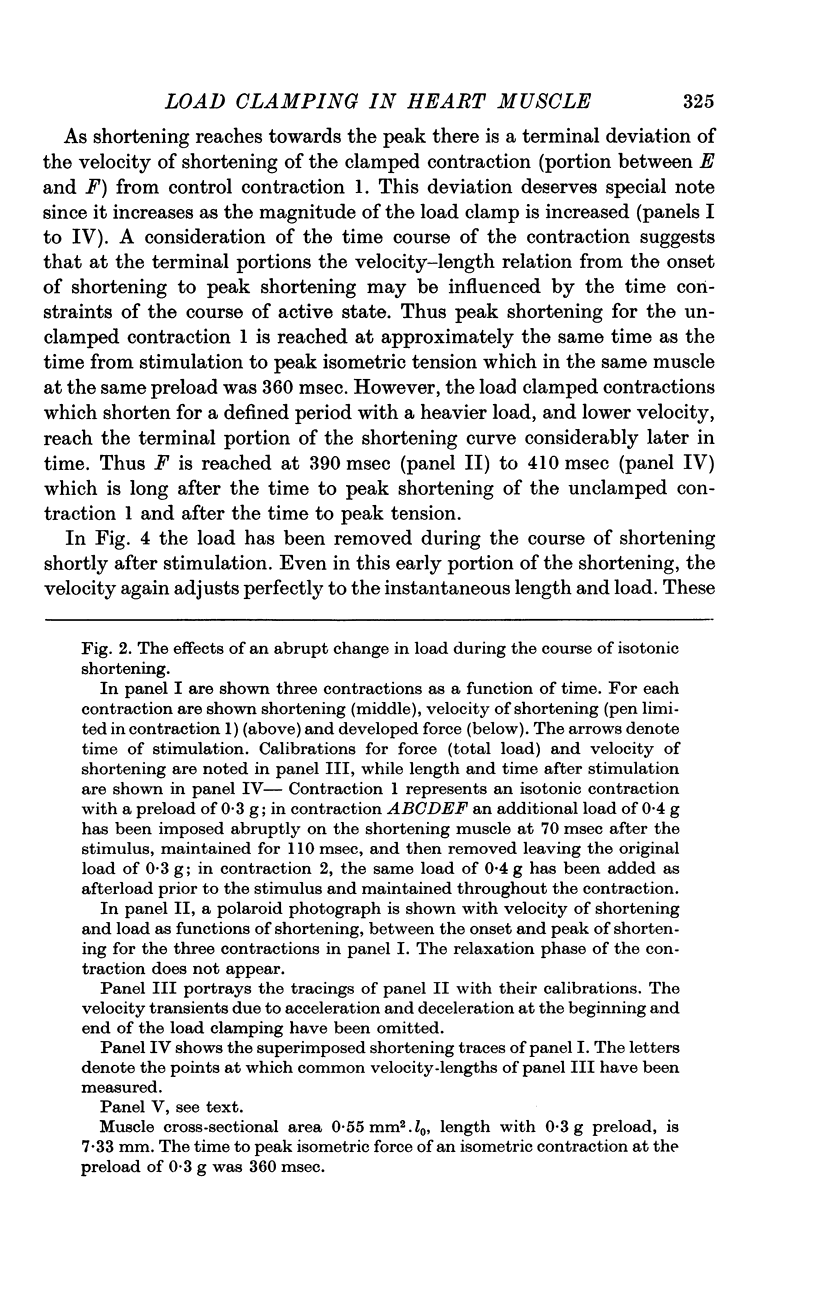
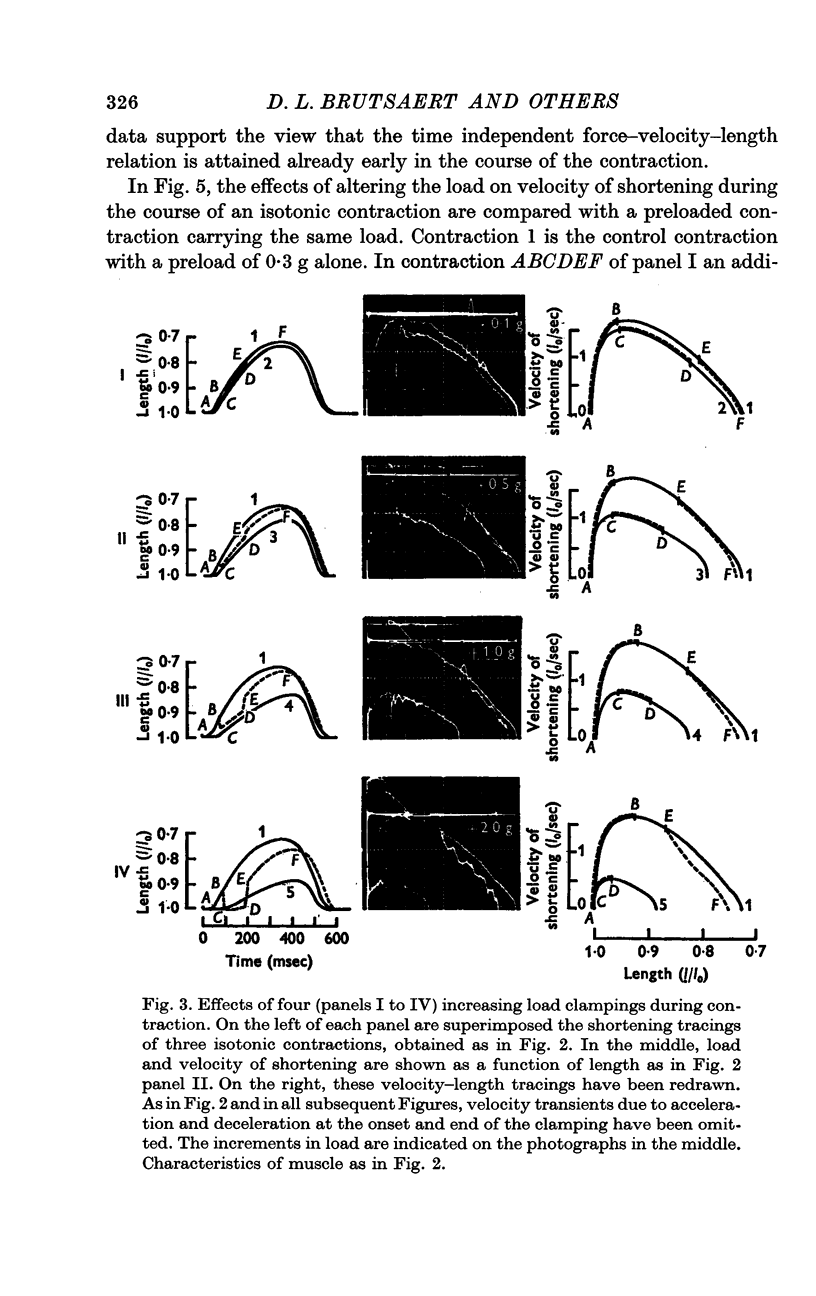
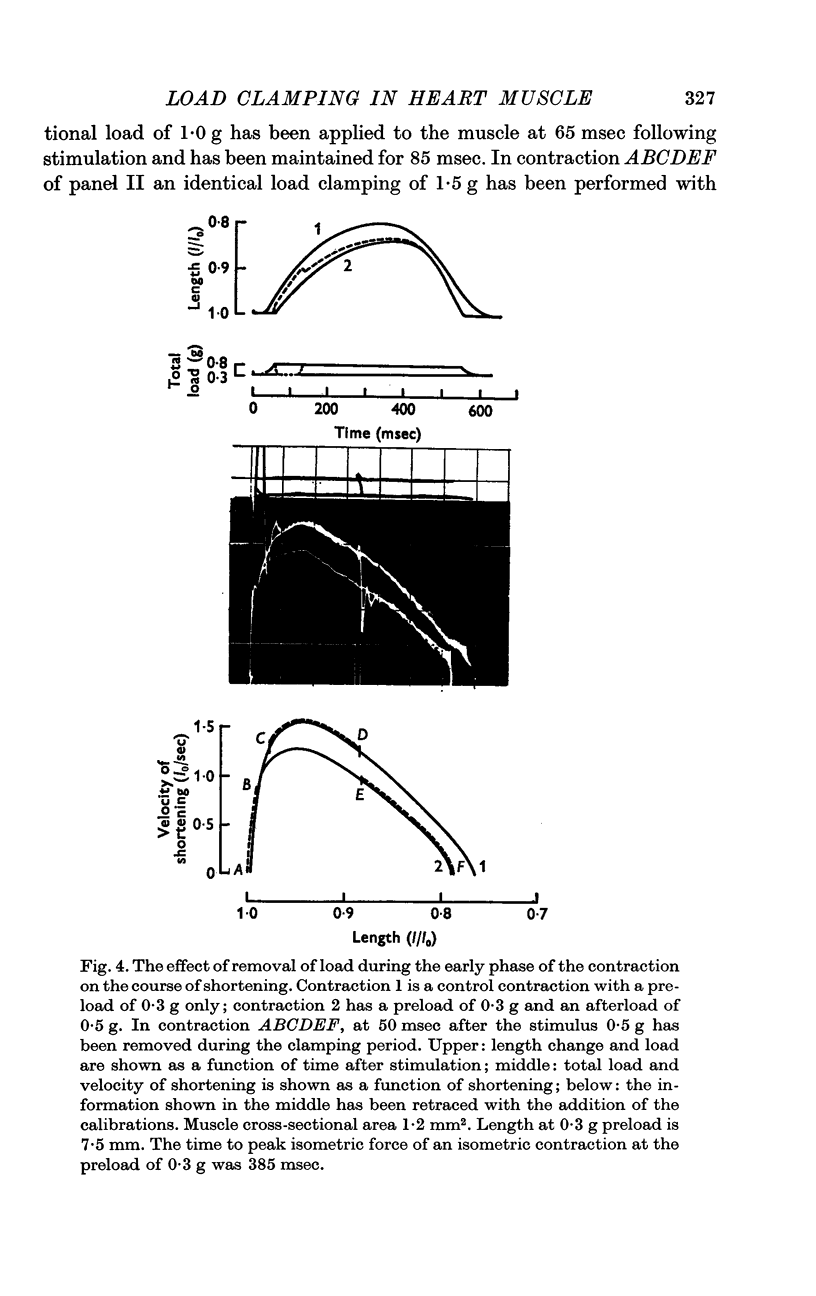
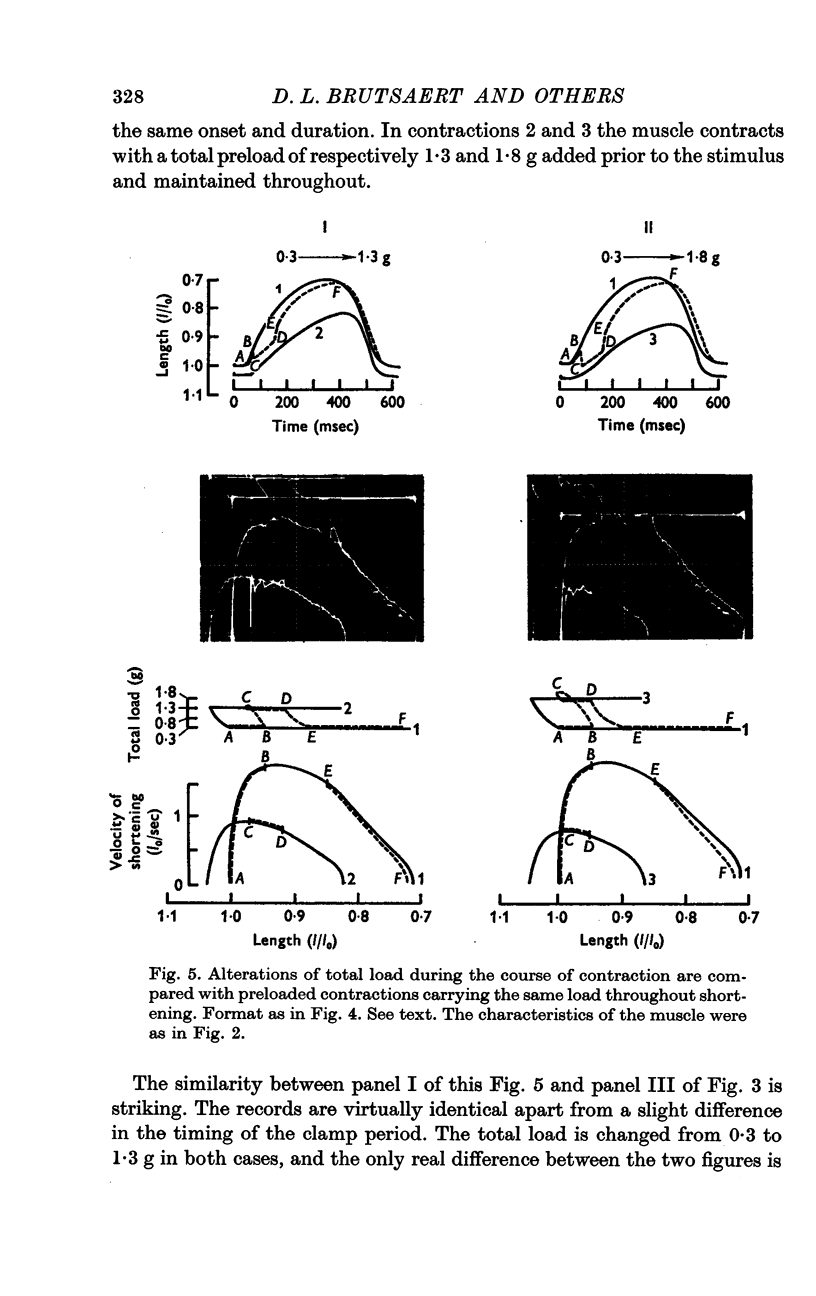
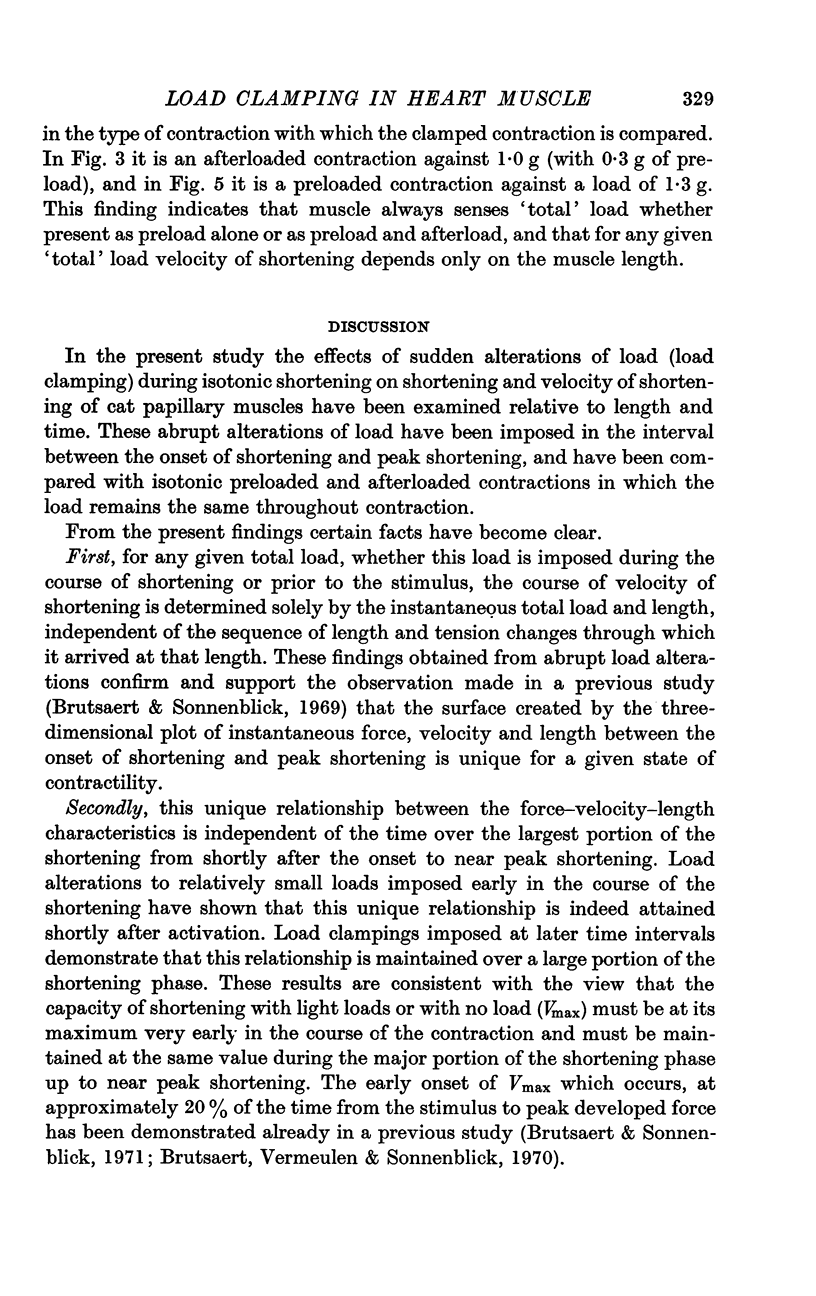
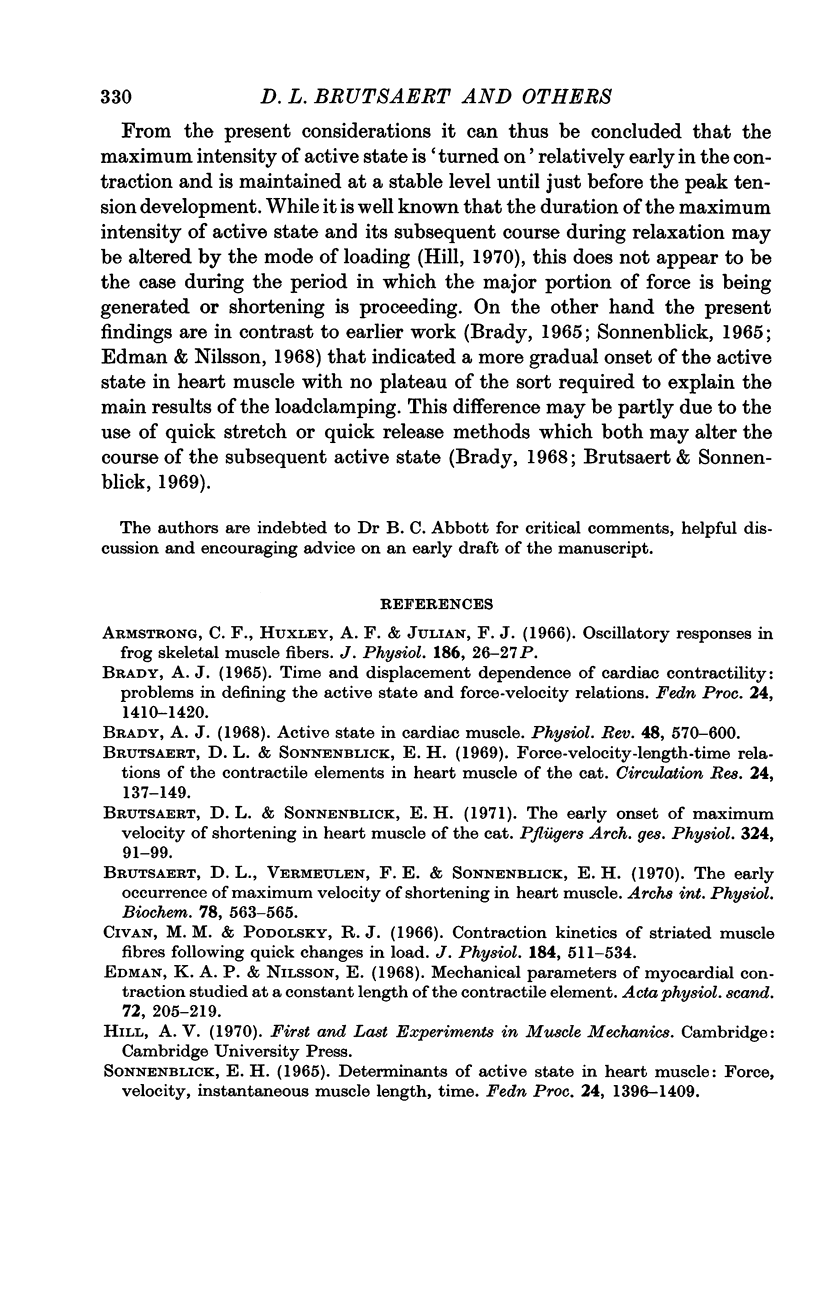
Selected References
These references are in PubMed. This may not be the complete list of references from this article.
- Brady A. J. Active state in cardiac muscle. Physiol Rev. 1968 Jul;48(3):570–600. doi: 10.1152/physrev.1968.48.3.570. [DOI] [PubMed] [Google Scholar]
- Brady A. J. Time and displacement dependence of cardiac contractility: problems in defining the active state and force-velocity relations. Fed Proc. 1965 Nov-Dec;24(6):1410–1420. [PubMed] [Google Scholar]
- Brutsaert D. L., Sonnenblick E. H. Force-velocity-length-time relations of the contractile elements in heart muscle of the cat. Circ Res. 1969 Feb;24(2):137–149. doi: 10.1161/01.res.24.2.137. [DOI] [PubMed] [Google Scholar]
- Brutsaert D. L., Sonnenblick E. H. The early onset of maximum velocity of shortening in heart muscle of the cat. Pflugers Arch. 1971;324(2):91–99. doi: 10.1007/BF00592655. [DOI] [PubMed] [Google Scholar]
- Brutsaert D. L., Vermeulen F. E., Sonnenblick E. H. The early occurrence of maximum velocity of shortening in heart muscle. Arch Int Physiol Biochim. 1970 Aug;78(3):563–565. [PubMed] [Google Scholar]
- Civan M. M., Podolsky R. J. Contraction kinetics of striated muscle fibres following quick changes in load. J Physiol. 1966 Jun;184(3):511–534. doi: 10.1113/jphysiol.1966.sp007929. [DOI] [PMC free article] [PubMed] [Google Scholar]
- Edman K. A., Nilsson E. The mechanical parameters of myocardial contraction studied at a constant length of the contractile element. Acta Physiol Scand. 1968 Jan-Feb;72(1):205–219. doi: 10.1111/j.1748-1716.1968.tb03843.x. [DOI] [PubMed] [Google Scholar]
- Sonnenblick E. H. Determinants of active state in heart muscle: force, velocity, instantaneous muscle length, time. Fed Proc. 1965 Nov-Dec;24(6):1396–1409. [PubMed] [Google Scholar]


